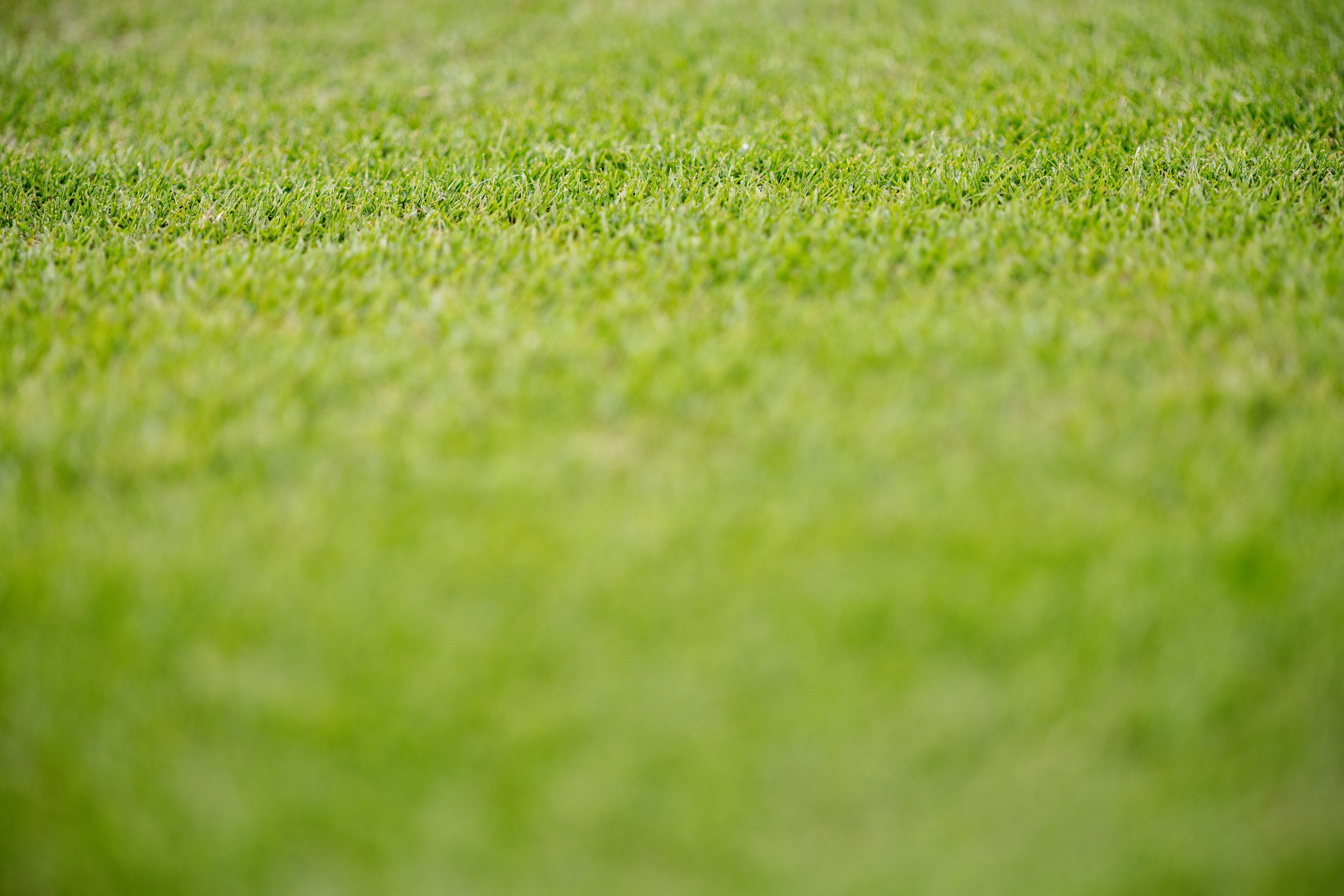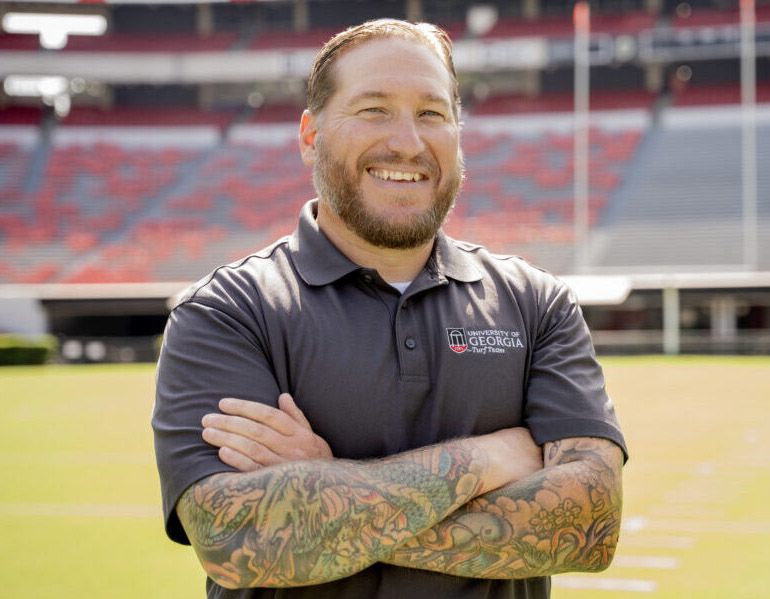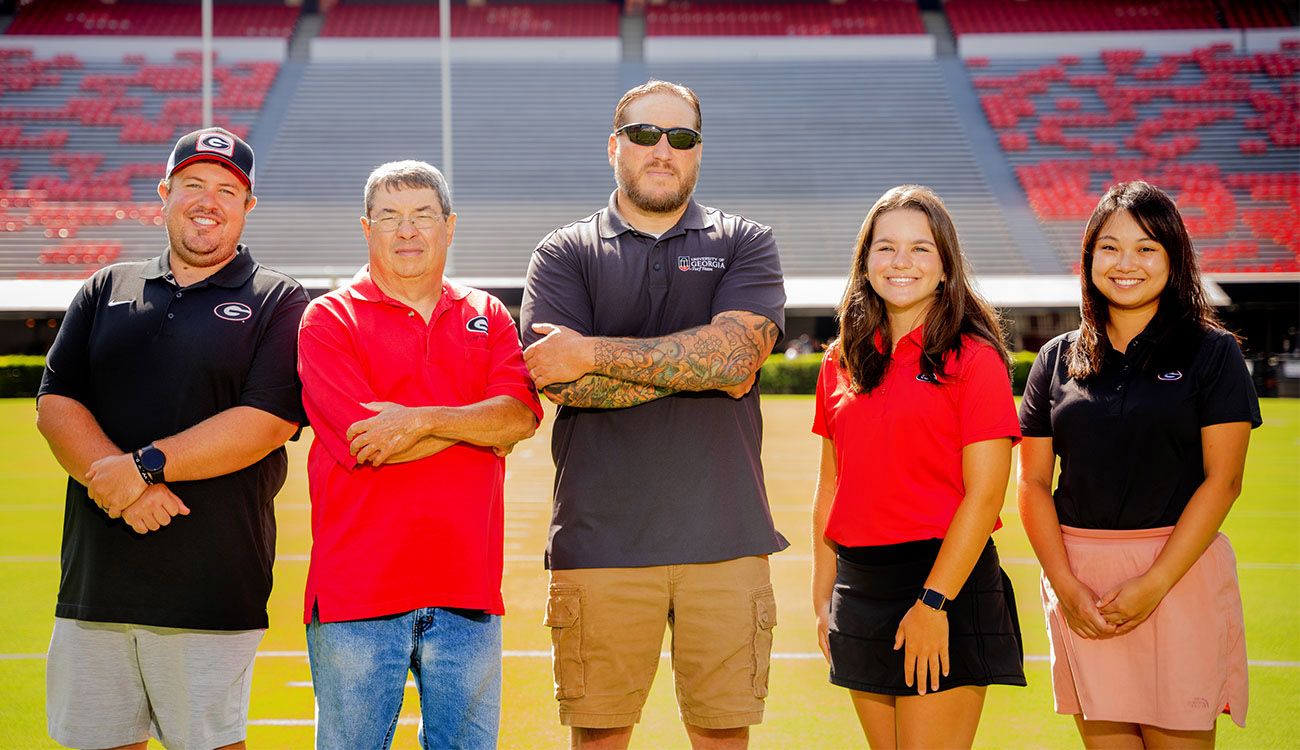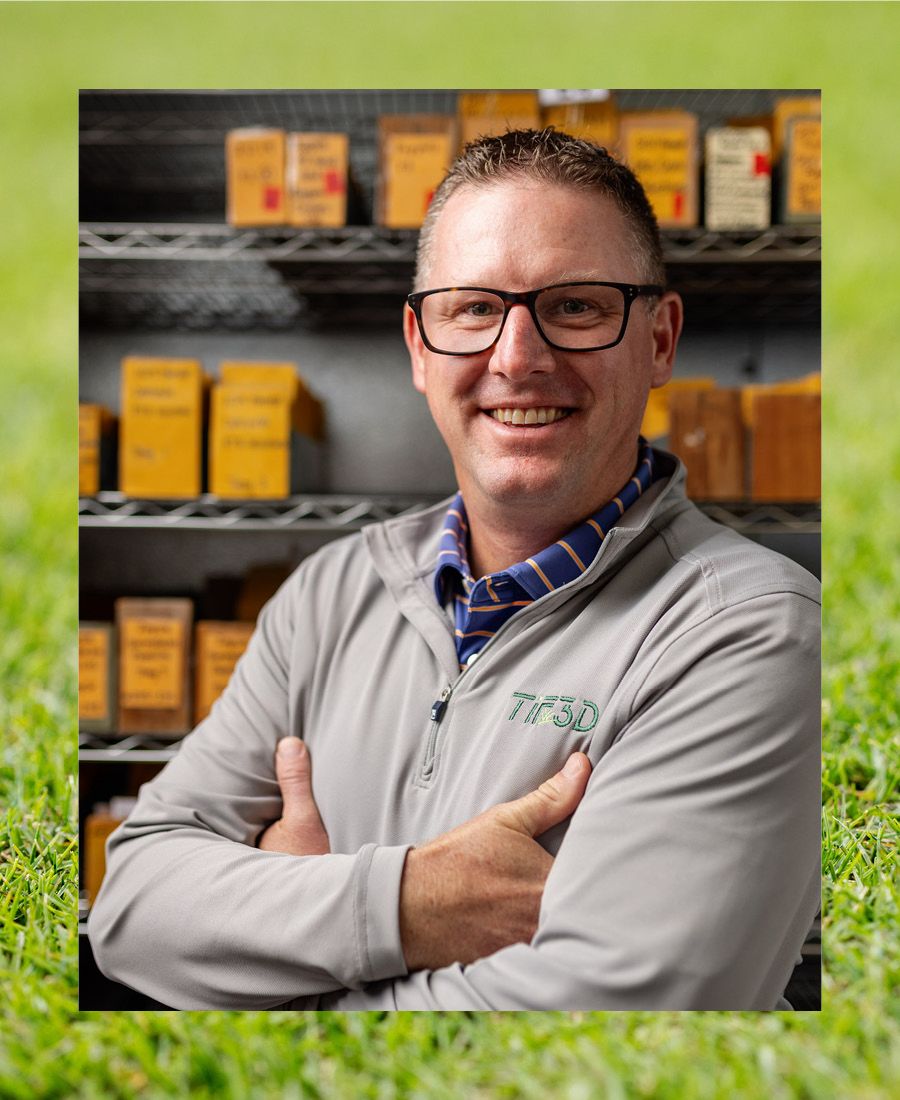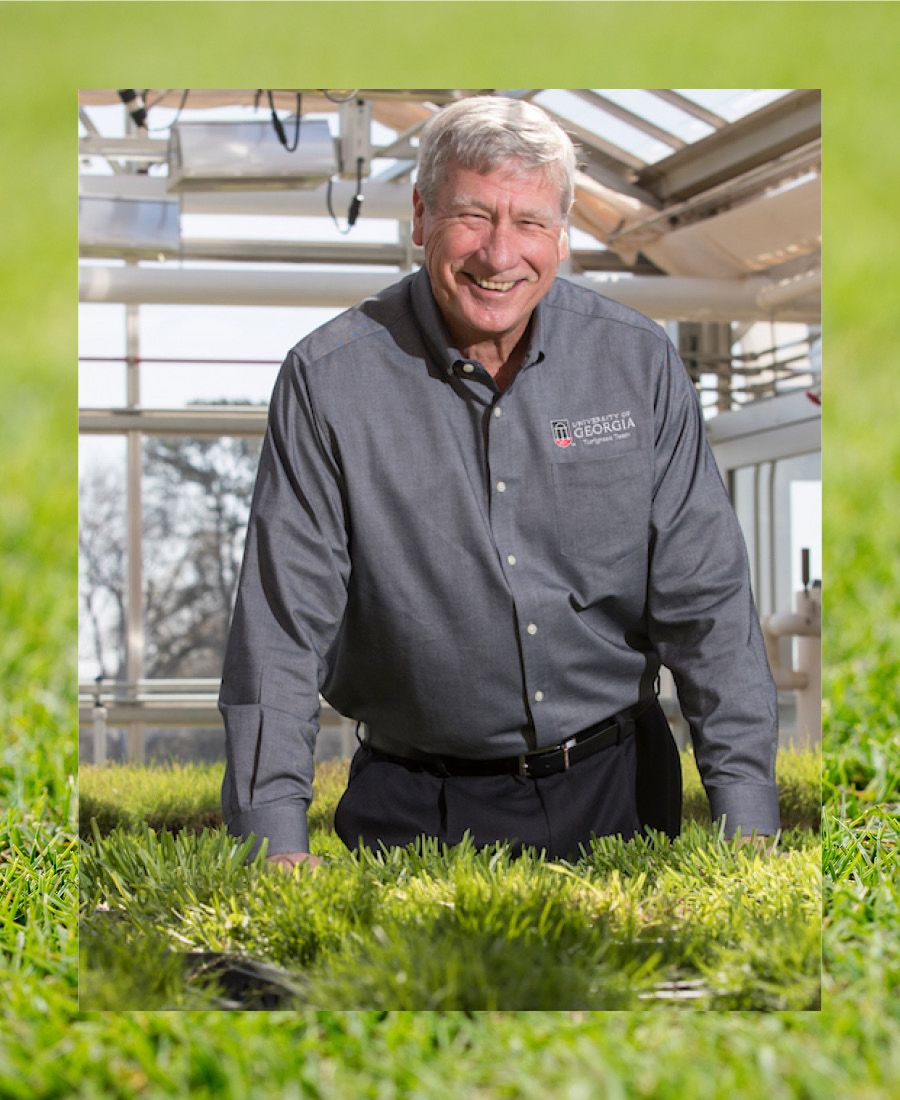Keep on the Grass
Call that a safety! Turf science helps athletes avoid injury on the field
For UGA Athletic Association Endowed Professor Gerald Henry and the UGA Turf Team, watching grass grow is a contact sport. (Photo by Jason Thrasher)
For UGA Athletic Association Endowed Professor Gerald Henry and the UGA Turf Team, watching grass grow is a contact sport. (Photo by Jason Thrasher)
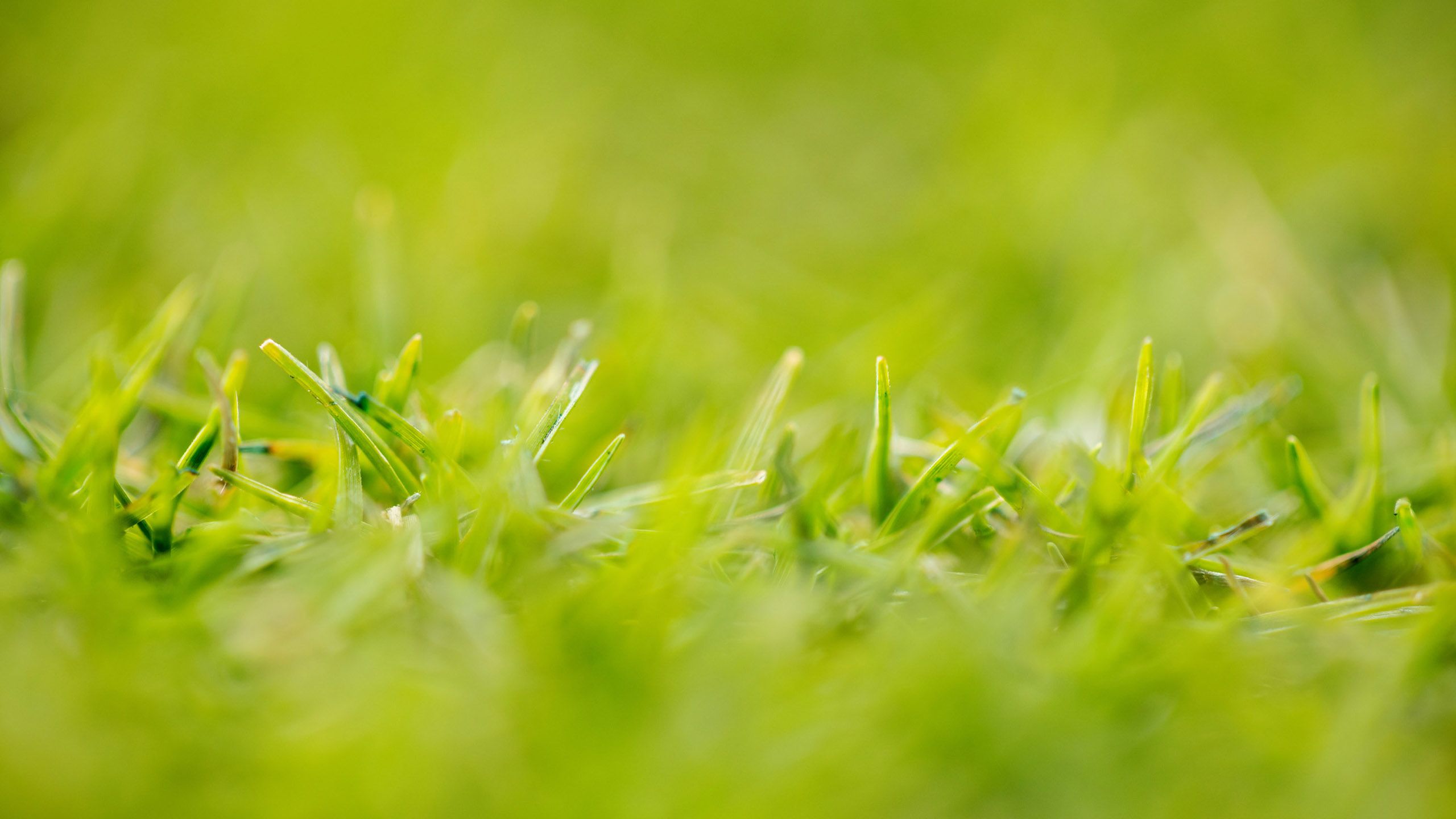
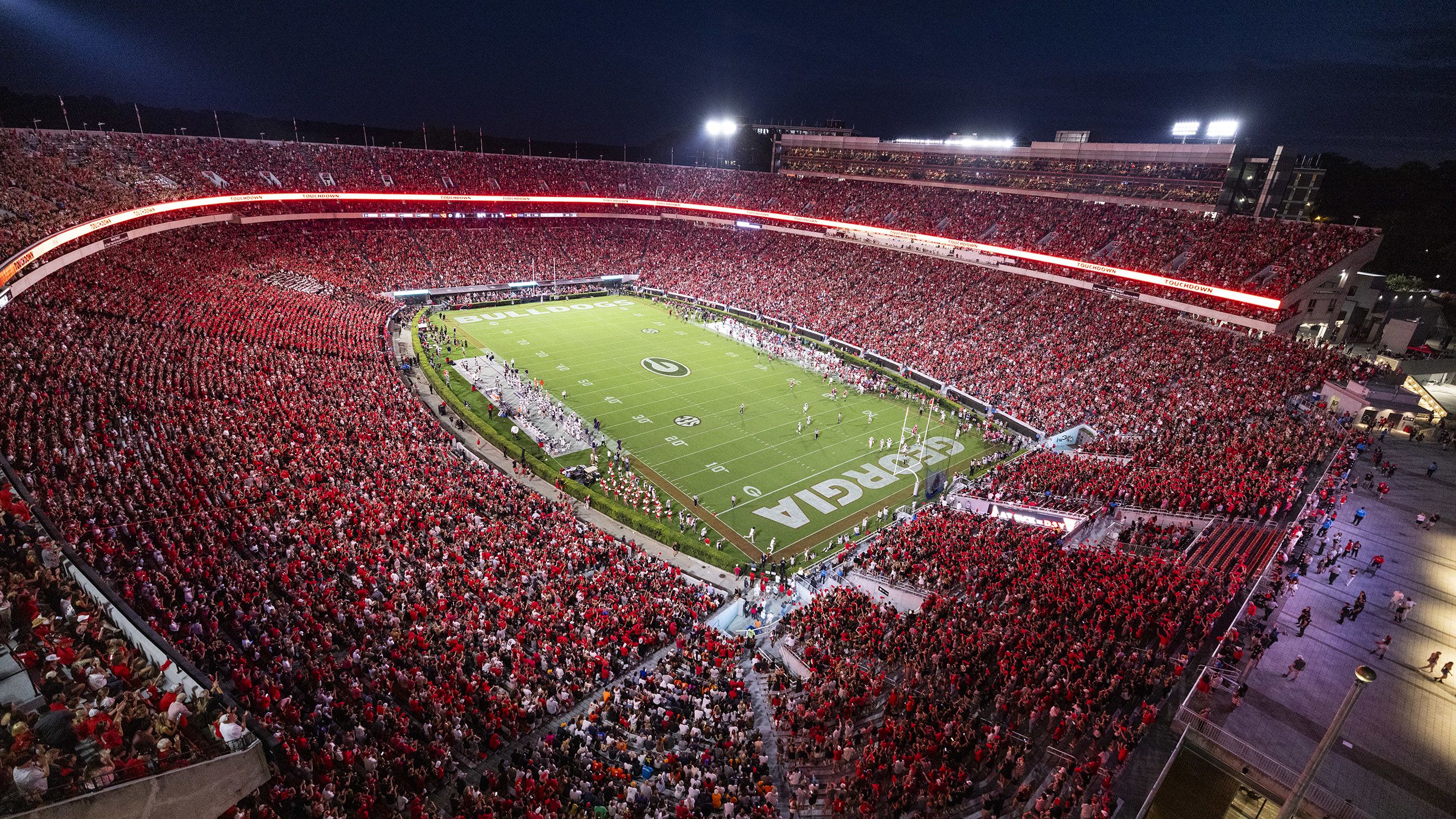
When the University of Georgia Bulldogs step between the hedges at Sanford Stadium, the grass on Dooley Field needs to look perfect. More importantly, though, it needs to help safeguard the health of athletes who compete on it.
Gerald Henry plays a big role in the latter.
The UGA Athletic Association’s endowed professor in environmental turfgrass leads a research team in the Department of Crop and Soil Sciences committed to creating sports fields that look good and perform well to limit the occurrence of injuries.
“We’re trying to figure out the interaction between athletes and playing surfaces, especially as these environments mature,” said Henry, faculty in the College of Agricultural and Environmental Sciences. “Early on, the fields may perform well, but several management challenges arise during the season that may negatively affect grass growth. We’re constantly trying to learn as much as we can about field performance and playability so that we can recommend adjustments that reduce injury occurrence.”
Turfgrass fields have many variables that can affect safety and playability. Soil compaction and surface hardness can reduce its ability to absorb impact, increasing risk of lower extremity injuries or concussions. Shallow roots mean poorer foot traction, raising the risk of ankle sprains or other related injuries. Poor moisture management can cause slickness.
Henry wasn’t thinking about turfgrass when he began his college studies in engineering at Lehigh University, but life sent him back home. A job doing golf course maintenance at Metedeconk National Golf Club in Jackson Township, New Jersey, eventually led him to study turfgrass management at Rutgers University.
He completed his undergraduate and master’s degrees in plant science and plant biology with a focus on turfgrass management and weed science, then earned his doctorate in crop science at North Carolina State University. After six years as a one-man turfgrass teaching and research staff at Texas Tech, he joined UGA in 2012, lured by opportunities for collaboration with a renowned turfgrass team.
Henry’s (center) team also includes (from left) Erick Begitschke, Kevin Tucker, Audrey Young and Julie Wang, among others. The large team of turfgrass researchers was one of the primary reasons Henry joined CAES in 2012. (Photo by Jason Thrasher)
Henry’s (center) team also includes (from left) Erick Begitschke, Kevin Tucker, Audrey Young and Julie Wang, among others. The large team of turfgrass researchers was one of the primary reasons Henry joined CAES in 2012. (Photo by Jason Thrasher)
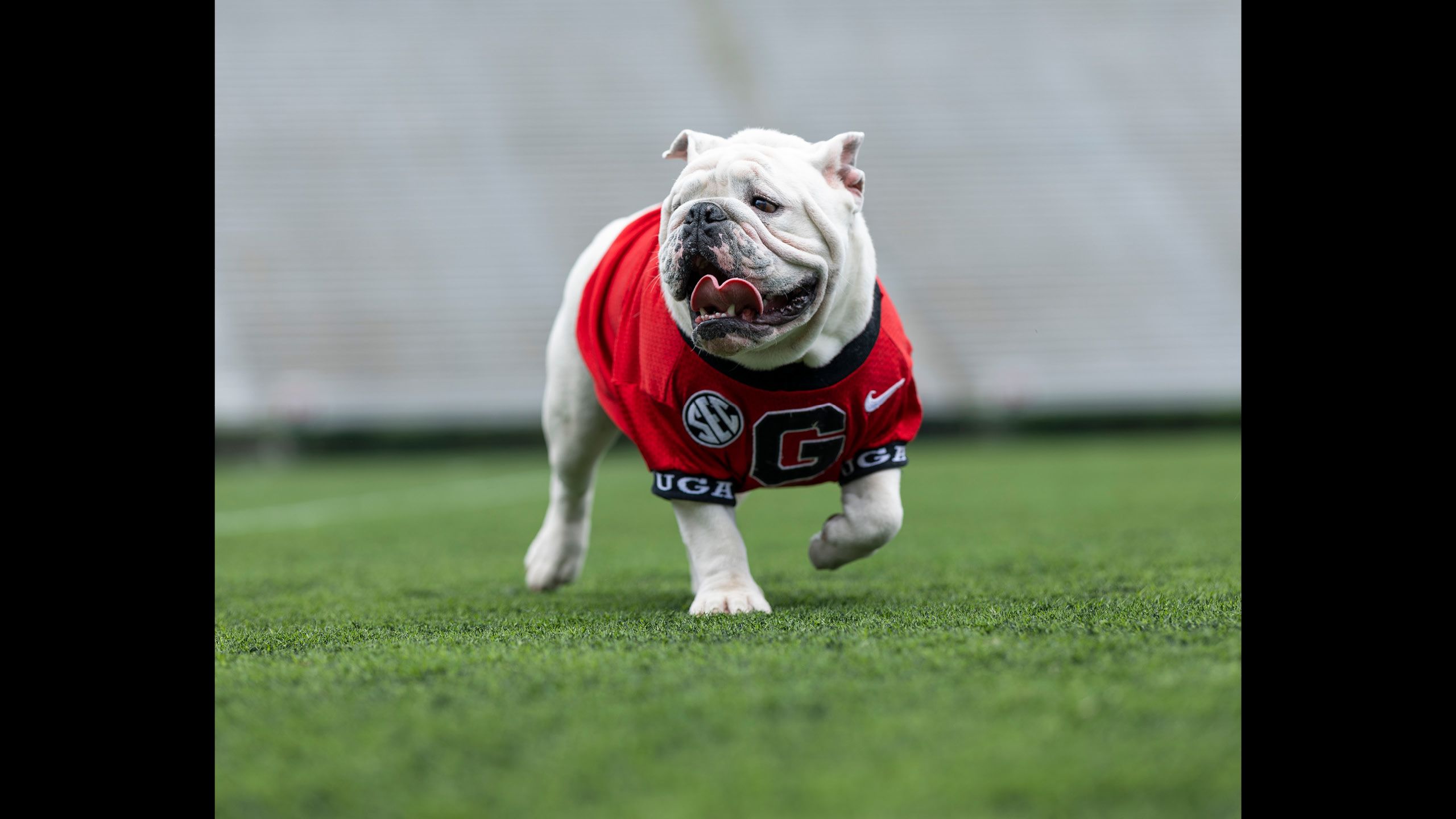
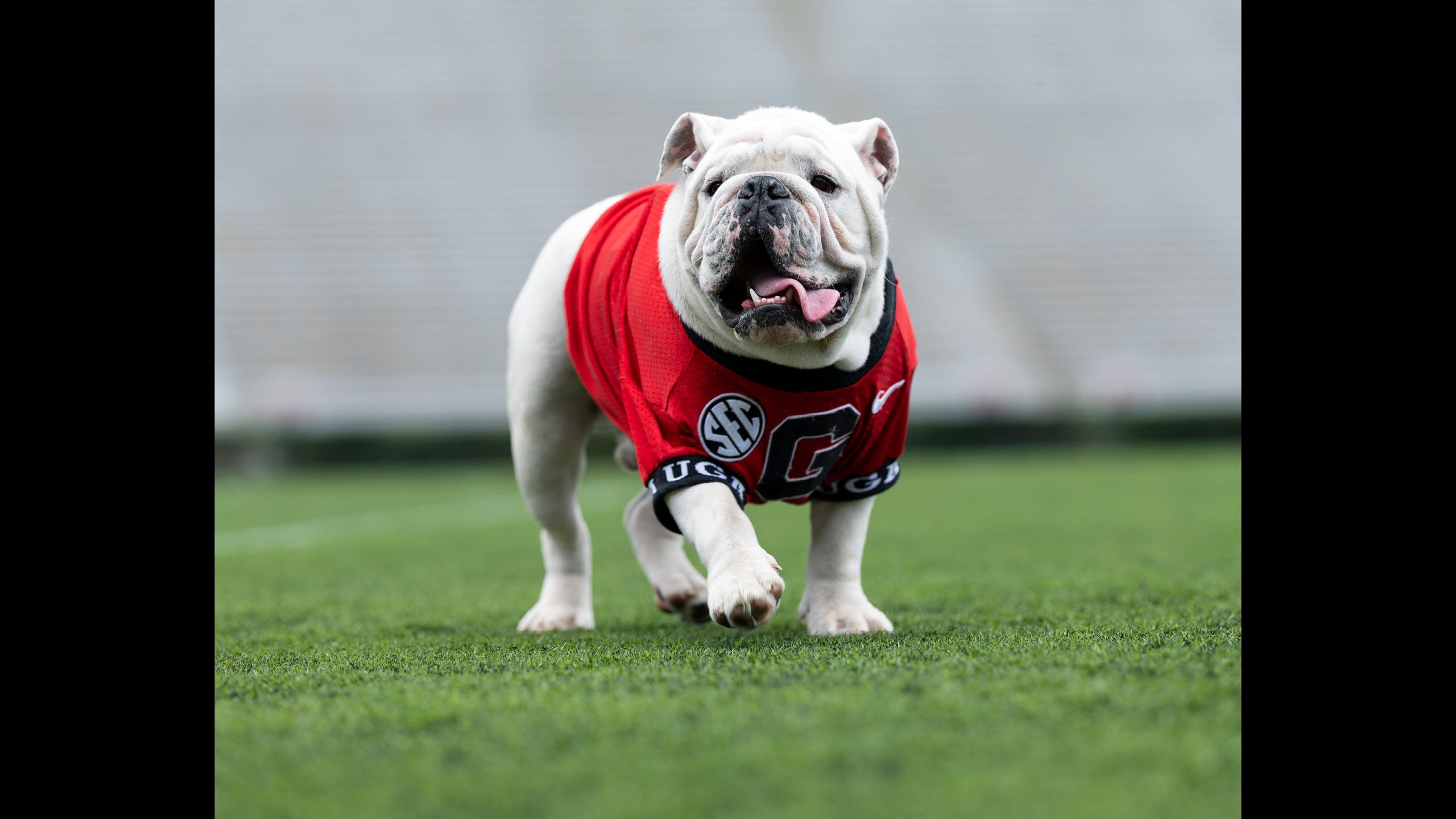
Turfgrass as a team sport
As part of a team that includes breeders Brian Schwartz and Paul Raymer, as well as Professor Emeritus Wayne Hanna, Henry has carved out his niche in the department, researching field management. With research technician Kevin Tucker and graduate assistants, they have developed systems to collect data on varying conditions within each field.
“We map these fields to get a better understanding of what’s good, what’s bad and how we can make things better,” Henry said.
To understand all the factors that can impact athlete safety, Henry and his team — in collaboration with Associate Professor Rob Lynall in the biomechanics lab of UGA’s Department of Kinesiology — conducted a trial at UGA’s Intramural Fields in Athens, used by student-athletes in various club sports including rugby and ultimate frisbee. They gathered weekly data on the turfgrass and soil parameters — surface traction, soil compaction, moisture and several others — while simultaneously monitoring the athletes for injury.
“Everything was georeferenced so we could overlay the agronomic data maps with the injury locations. We started to make correlations between conditions on the field and the types of injuries that occurred.”
The results showed that roughly 80% of injuries occurred where players transitioned from one field condition to the next, such as a drier part of the field to a wetter area, leading to research aimed at decreasing the variability of how fields play.
Natural benefits
Looking beyond athlete safety, Henry is working on pollinator habitat research with graduate assistant Julie Wang and colleagues from Mississippi State and Auburn universities. The project is called “refuge lawn,” but Henry is promoting it in sports field complexes and golf courses to diversify the monoculture of turfgrass environments.
“There’s a big push to increase pollinator habitats, but the survival of these areas has been difficult because we’re constantly planting non-native plants that are not acclimated to our environment,” he said.
Henry hopes incorporating more biodiversity will change the perception people have about turfgrass on golf courses, home lawns and athletic fields.
“In the end, turfgrass is an important component of the overall ecosystem. Even when planted as a monoculture, it is one of nature’s best filters. It is only second to rainforests in terms of carbon sequestration on the planet,” he added.
Brian Schwartz (Photo by Paul Privette)
Brian Schwartz (Photo by Paul Privette)
Paul Raymer (Photo by Peter Frey)
Paul Raymer (Photo by Peter Frey)
Wayne Hanna (Photo by Corey Nolen)
Wayne Hanna (Photo by Corey Nolen)
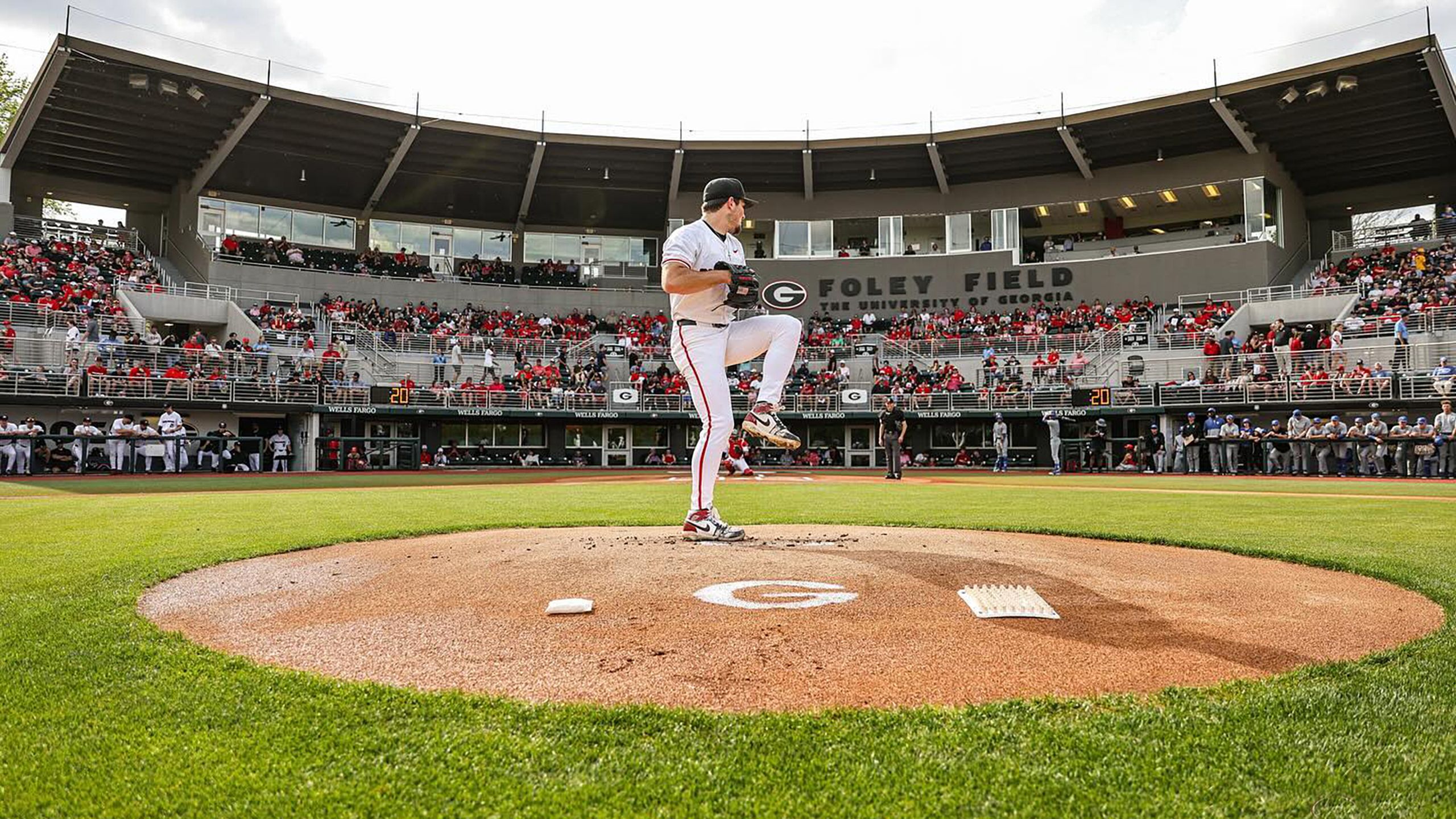
Turf Battle
The world’s finest playing fields sport UGA Bermuda grasses
By Emily Cabrera
From major sporting stadiums across the U.S. to the Sydney Opera House in Australia, turfgrasses developed at the University of Georgia Tifton campus have set the standard for high-quality sporting venues and event spaces around the globe.
Bermuda grass hybrids released by UGA’s breeding program have been used on golf courses and athletic fields since the 1950s.
For many years, ‘Tifway’ and ‘Tifdwarf’, two Bermuda grass hybrids developed by U.S. Department of Agriculture (USDA) and UGA researchers in Tifton, covered more golf courses, athletic fields and lawns than any other turf varieties in the world. ‘Tifway’ remained the gold standard for decades and is still used in many college and professional sports venues and golf courses around the U.S.
Another variety, ‘TifSport’, was used to sod the field at Japan National Stadium for the 2021 Summer Olympics and pitches for the 2010 FIFA World Cup in South Africa. ‘TifSport’ is a dense, medium- to fine-textured grass bred to withstand heat, sun, and wear and tear from sports while tolerating herbicides.
‘TifGrand’, released in 2008, is a dense, dark-green grass that was used in Japan National Stadium for the 2021 Summer Paralympic Games, as well as in stadiums for the 2014 FIFA World Cup in Brazil, along with ‘Tifway’.
‘TifTuf’, an extremely drought-tolerant variety bred at UGA, can be found on the lawn in front of the Sydney Opera House in Australia and the great lawn at the Atlanta Botanical Garden, as well as UGA’s North Campus in Athens.
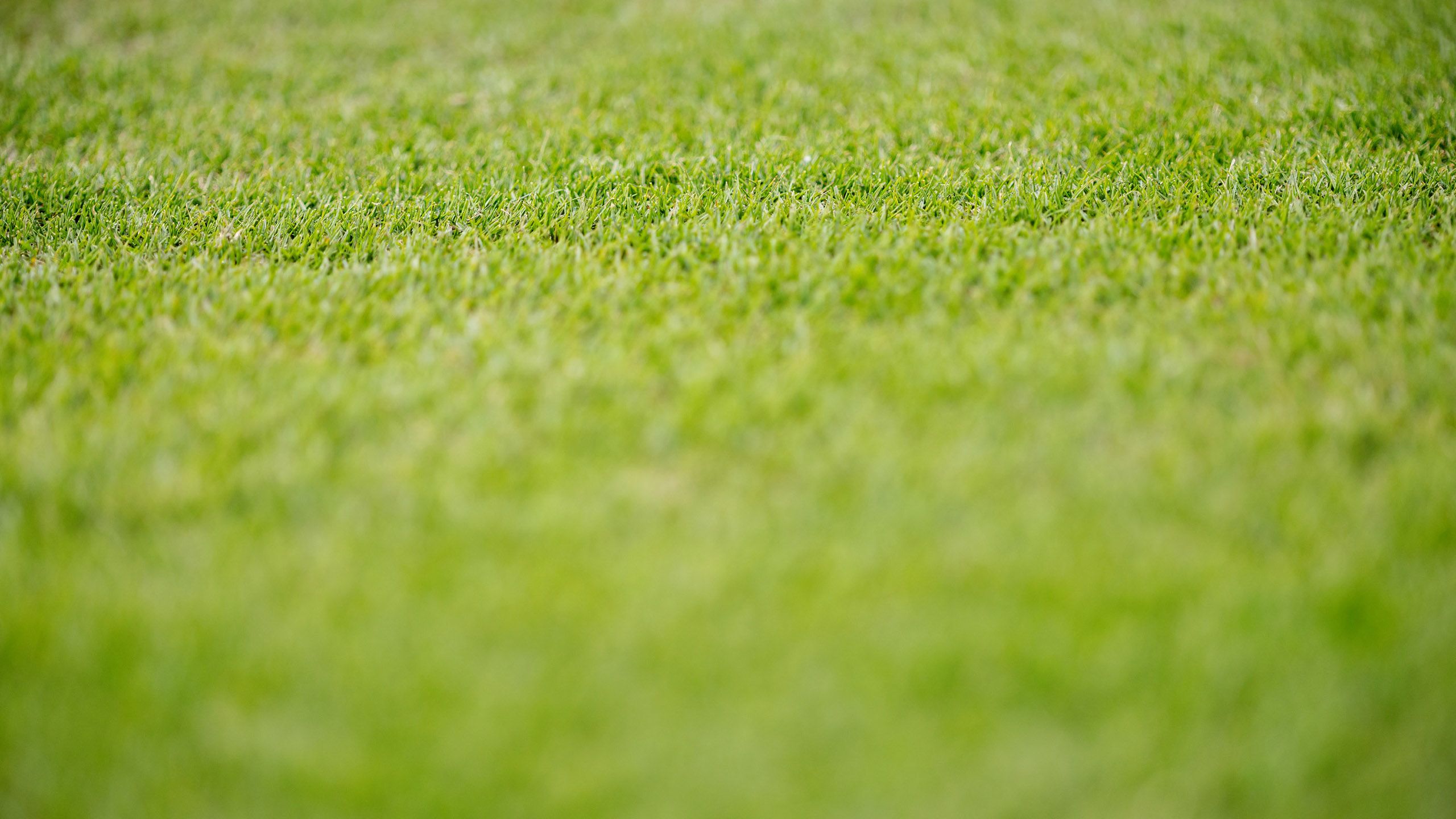

Earlier this year, the UGA turf team released a new Bermuda grass variety called ‘Tif3D’.
‘Tif3D’ is a specialty grass developed specifically for putting greens and boasts the unparalleled performance and playability putting greens require, said Brian Schwartz, turfgrass breeder and professor in the Department of Crop and Soil Sciences at the College of Agricultural and Environmental Sciences. The turf’s name is derived from its development at the Tifton campus and the variety’s dark, dense and durable characteristics.
The new variety is a hybrid Bermuda grass that descends from ‘TifGreen’, one of the first hybrid Bermuda grasses released from CAES in the 1950s by world-renowned research geneticist and plant breeder Glenn Burton.
With its dense, fine-textured canopy, great uniformity, and superior resistance to stressors including drought and scalping, Schwartz said ‘Tif3D’ is the latest attempt to meet the critical aesthetic demands of the golf industry.
Much of the work Schwartz and other turfgrass breeders do is centered on developing cultivars with the effects of climate change in mind. Because ‘Tif3D’ has shown superior resistance to drought and other stressors, it is well suited to areas where water conservation is a priority, Schwartz said, adding that the secret to the success of many CAES-bred turfgrasses is the location where they are bred.
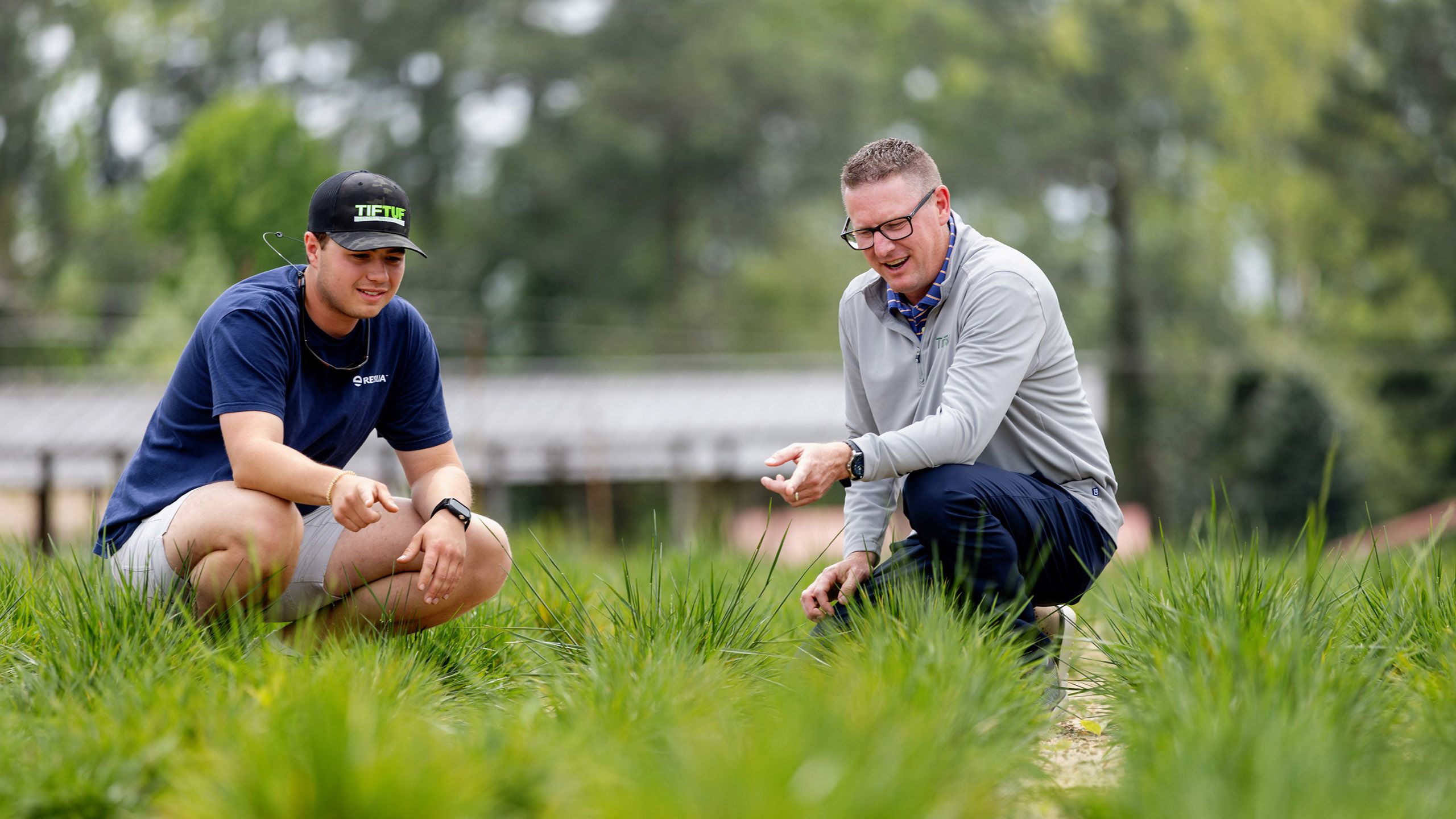
“I always say that because the geographic location of Tifton is so bad, it’s perfect,” he mused. “We have drought, rainy seasons, countless plant diseases, nematodes, and funny spring and fall weather anomalies that all serve to kill plants. We put our grasses through some of the hardest conditions here to find the toughest individuals that will perform the best. If it survives Tifton, you have a great chance of growing it elsewhere. It’s so bad, it’s good.”
Schwartz credits much of his success in the turfgrass breeding program to the foundational work and valuable lessons he learned from his predecessor and mentor, Wayne Hanna, an esteemed Georgia turfgrass breeder who has been active for more than 40 years.
‘TifTuf’, which the two developed and co-released in 2014, became one of the fastest-adopted Bermuda grass varieties worldwide for its superior drought- and stress-tolerance.
Due to the similarities between ‘Tif3D’ and the lab’s previous gold-standard varieties, like ‘TifEagle’, Schwartz is confident that UGA’s state-of-the-art research facilities and dedicated team of experts will continue to keep the industry at the forefront of sustainability and performance.
“These strong ties have created a long-term, cyclical pipeline for developing and maintaining a strong turfgrass industry in Georgia,” emphasized Schwartz.
News media may republish this story. A text version and art are available for download.
